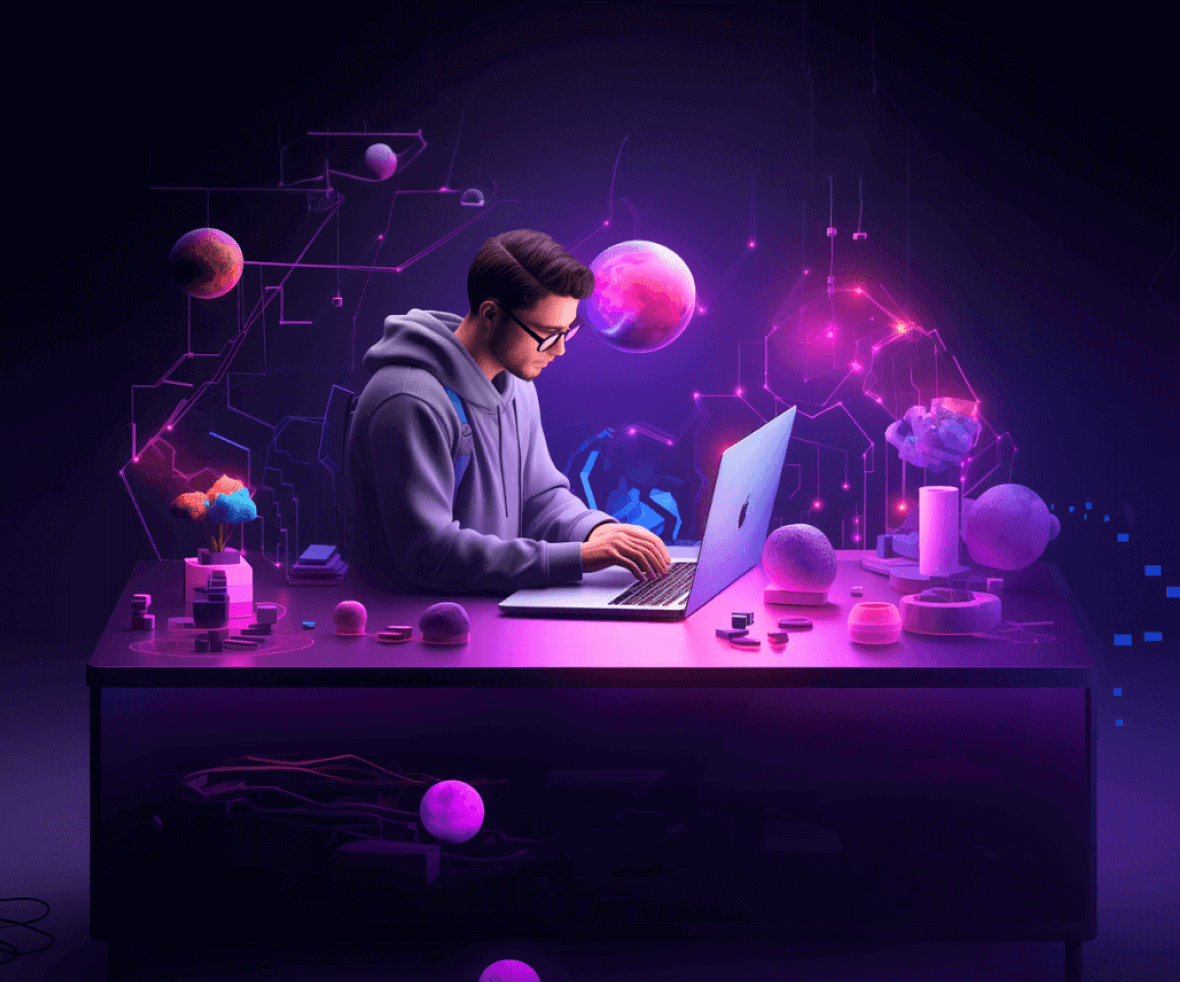In our journey to unravel the future of AI for design, we engaged with 416 design professionals through our comprehensive survey on the ‘Impact of AI on the Design Industry in 2024’.
Within these insights, we discovered the most popular tools currently in use by industry professionals. Here are the top 5 AI tools recommended by designers

1. ChatGPT
In our comprehensive report, the spotlight fell on ChatGPT as the frontrunner, being utilized by a remarkable 86% of respondents in the design industry. This versatile tool, developed by OpenAI, proved to be more than just a text generator.
Designers leveraged ChatGPT’s capabilities to brainstorm innovative design ideas, generate content for marketing materials, and even draft creative scripts. Its ability to understand and respond to diverse instructions made it a valuable asset, enhancing collaboration and pushing the boundaries of creative expression in the design process.
2. Midjourney
Our extensive report brought to light the widespread adoption of Midjourney, with 35% of design professionals actively incorporating it into their creative workflows. Midjourney, an AI image generation tool, captured the imagination of designers by transforming text prompts into unique and often surreal visuals.
Paired with ChatGPT, this dynamic duo enabled designers to seamlessly ideate, communicate, and actualize their creative visions. The integration of Midjourney and ChatGPT showcased a synergy of AI tools, fostering a collaborative environment where the fusion of text and visuals opened a new borderline in design exploration.
3. Canva
We uncover that Canva emerged as a design powerhouse, with 28% of respondents relying on it for their creative pursuits. Canva, recognized for its user-friendly platform, provides designers with a diverse array of templates, images, and fonts, simplifying the design process.

The integration of Canva into the design workflow, coupled with the support of tools like ChatGPT, signifies a collaborative approach. Designers leveraged Canva’s features alongside AI assistance to craft visually appealing and impactful content, highlighting how easy-to-use design platforms and advanced AI tools work together seamlessly.
4. Adobe Firefly
In our survey, we found that 26% of respondents relied on Adobe Firefly, a powerful AI-powered plugin for Adobe Creative Suite programs. Users leveraged Adobe Firefly for tasks like image editing, color correction, and precise object selection. Despite being in beta, it garnered popularity among creative professionals for its potential to enhance various aspects of the design process.
The integration of Adobe Firefly showcases how AI tools are becoming indispensable collaborators for designers, contributing to more efficient and innovative workflows.
5. Dall-E 2
According to our survey, 22% of participants voted for Dall-E 2, an advanced AI image generation tool developed by OpenAI. Dall-E 2 distinguished itself by generating more realistic and detailed images compared to its counterparts.
While it comes and Dall-E 2 -The tool demonstrated how AI Tools, such as Dall-E 2, are evolving to meet the demand for sophisticated and high-quality design outputs, emphasizing the growing significance of AI in the design landscape.
We also discovered some additional design tools, including Uizard, Bard, Figma AI, Notion AI, and Bing, each making a noteworthy impact, in smaller percentages. These tools, though less dominant in usage, play valuable roles in diverse design workflows, showcasing the dynamic and varied toolkit within the design community.
As we conclude, these tools – ChatGPT, Midjourney, Canva, Adobe Firefly, and Dall-E 2 – aren’t just innovations but essential partners in the creative journey. Their future lies in further collaboration, pushing the boundaries of design possibilities. Designers can expect these tools to evolve, offering even more advanced features and redefining the landscape of creative expression.
Explore the complete insights from our survey on ‘Impact of AI on Design Industry in 2024‘ Uncover the dynamic synergy between AI and creativity, and join us in shaping a future where design is limitless and innovative.
FAQs
What is the future of design with AI?
The future of design with AI is collaborative, leveraging technology to enhance creativity, streamline processes, and unlock innovative possibilities.
What skills do you need to learn to be successful in AI design?
To excel in AI design, cultivate skills in data analysis, machine learning basics, proficiency in relevant design tools, and a deep understanding of user-centric design principles.




